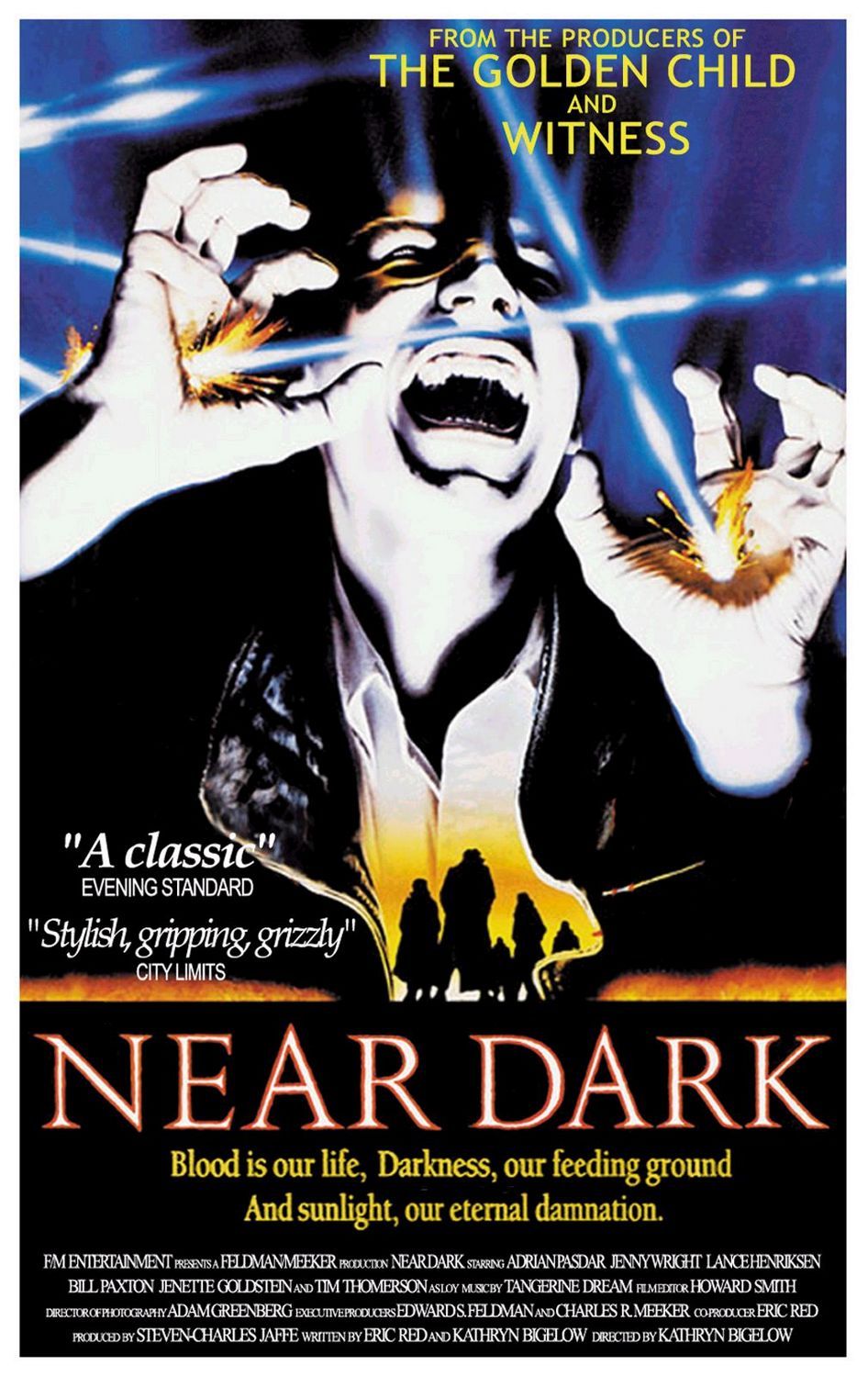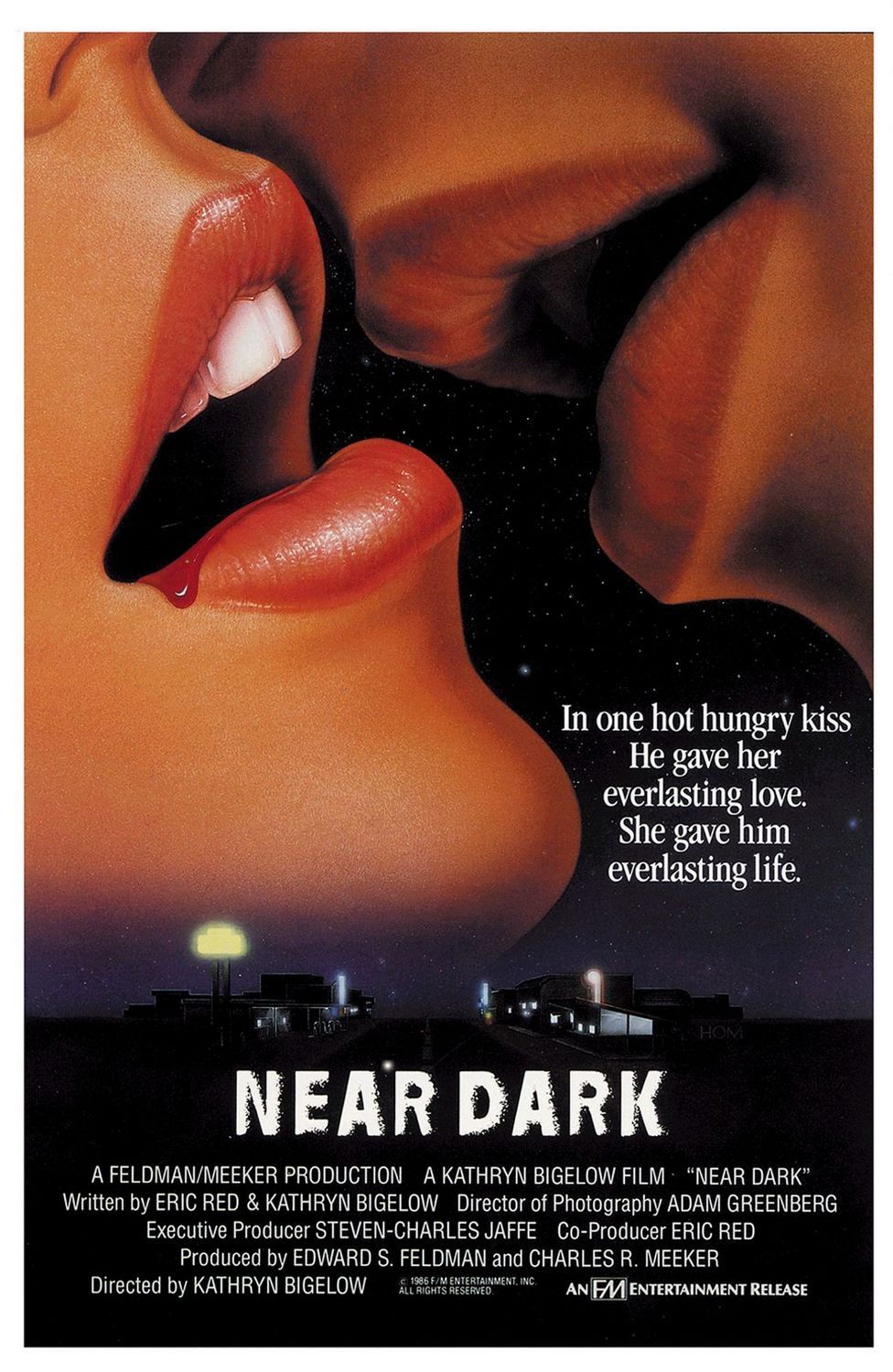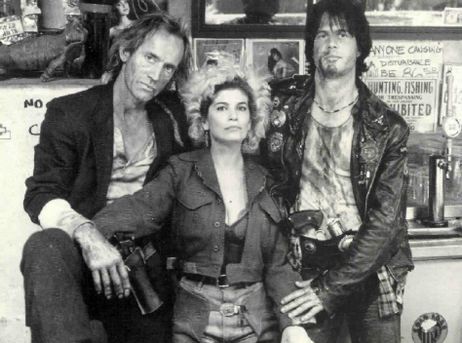Near Dark is an awesome film. It is not only the best vampire film of the 80s and 90s, slightly edging out the excellent Fright Night, but it is also to my mind one of the most criminally overlooked and underrated horror films of the last 30 years. Kathryn Bigelow puts elements of horror, traditional vampire myth, Westerns and romance into a blender and then adds enough of her own fresh ideas to create a movie that oozes a dank, hazy and sultry atmosphere; the kind of atmosphere that the creators of Twilight could only dream about.
Now I really like The Lost Boys, but Bigelow's tale is twice the film of its more famous contemporary. The basic set-up for the film is simple: Caleb, a restless young man living in Nowheresville, Oklahoma, meets a mysterious and attractive girl while hanging out drinking beer with his friends. After approaching the girl, things seem to be going well for Caleb. The young girl, Mae, seems to like him and asks for a lift back to the trailer park where she is 'staying' with her family. However, things are not what they seem: Mae is a vampire who is out hunting for human blood, with Caleb the intended victim.
Mae does bite Caleb, but something about him reminds her of her early life and she spares him. Caleb, thinking Mae is simply crazy, drives off, but very soon it is clear all is not well. Caleb gets sicker and sicker, struggling with his mystery illness. Before he can reach the safety of his home, he is kidnapped by Mae's family. As he has been turned, Mae's fellow vampires can not kill him and instead grudgingly attempt to initiate him into their brutal shadow world.
These are not the romantic vampires of myth. Bigelow creates a cast of desperate, brutal villains who are more like a pack of animals or a biker gang than a family. Jessie, the leader of the gang, is a violent and wicked veteran of the Civil War, Homer is a creepy old man trapped in the body of a young boy and Severin is a Southern ladies' man who relishes the extreme violence of the vampire lifestyle. Mae is the only character that has managed to maintain some contact and memory of the daylight world and her relationship with Caleb draws her further back to the light.
Near Dark is a film where the story is almost secondary to the visuals and the atmosphere created by Bigelow. Now, in most films this would be a weakness, but in Near Dark it is the film's main strength. The story, while engaging, is not hugely original - it is the way that the film looks, feels and sounds that makes it a masterpiece of post-70s horror. The visual style of this film is fantastic. From the opening shot of Caleb driving across the stark Oklahoma landscape, the film just looks gorgeous.
The solid, loving and humdrum existence of Caleb's family is in contrast to the chaotic, violent but seductive camaraderie of the vampires' outlaw existence. Bigelow achieves this as much by what the film looks like as the action on screen. In Near Dark the daylight hours are ablaze with light. Everything is crisp and clear, the sun fills every inch of the screen, everything is visible. Yet they are bland and colourless, a symbol of the life that Caleb will lead if he chooses to remain with his family, He will work and marry and ultimately die.
If the daytime visuals of Near Dark are stunning, the night-time scenes are operating at the level of near genius. Never in any film has the contrast between night and day been more clear than in Near Dark. They are not simply different times of the day, but different worlds, and it is between these two worlds that Caleb must choose. Mae asks Caleb to look at the night early on in the film, saying, "it's so bright it will blind you" and going on to describe the night as deafening. It is really amazing that Bigelow manages to portray both of these ideas in her direction of the film.
The night scenes that dominate so much of the film are phenomenal. The screen pulses with a weird woozy kind of light. The scenes are hazy and almost blurry but at the same time somehow crisp, and give the impression of being under water or not being fully conscious. Bigelow shows both the haunting appeal of the night and the vampires' lifestyle, and the danger and sinister nature of it. Ultimately Caleb must make a choice and it is a choice all of us must make, albeit in a less dramatic setting. We must make a choice to grow up and accept responsibility and adulthood, or to reject it and try to stay forever young and irresponsible, avoiding the difficult compromises of adulthood.
Another ingredient which adds to success of this film is the inspired soundtrack by Tangerine Dream. The music and visuals work together to perfection. The fact that this film was Bigelow's debut release is even more extraordinary. Bigelow has created a film of beauty and ferocity which melds the romanticism of vampire mythology with the grit and elegiac nature of the Western tradition to create something special.




No comments:
Post a Comment
Note: only a member of this blog may post a comment.